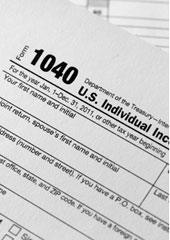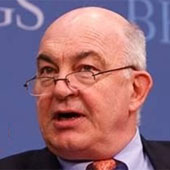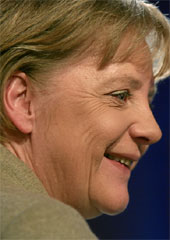Can Income Inequality Destabilize the U.S. Economy?
What are the potential consequences of increasing income inequality in the world’s largest economy?
March 28, 2013

High and rising levels of inequality may be a cause of increased macroeconomic instability. They contribute to a fraying of the political consensus, are associated with boom-bust credit cycles and may ultimately lead to a chronic weakness of economic demand.
For a long time, few economists — even those concerned about inequality — thought about this topic in the context of macroeconomic policy.
It wasn’t always so. There was a time early in the 20th century when some believed that capitalism would be vulnerable because increases in income concentration at the top would lead to a chronic lack of sufficient aggregate demand.
These concerns vanished as income distribution improved after the 1930s. Macroeconomic policy also became a more powerful tool for stabilizing economic conditions.
However, as income inequality has made a spectacular and quite unexpected comeback, and the recovery from the Great Recession has been exceptionally sluggish, now these concerns are reemerging. Moreover, economists such as Raghuram Rajan have suggested a connection between high income inequality and events that triggered the Great Recession in the first place.
The unsustainable increase of housing prices fueled by low interest rates (and, in part, by various forms of government subsidy) allowed and encouraged U.S. households to borrow using their house as collateral. The middle and lower-income groups benefited from living in a macroeconomic climate of abundant credit and low unemployment. They were keen to compensate the stagnation of their real incomes by borrowing.
This led to outcomes that, at least with the benefit of hindsight, can only be described as quite self-defeating. Most prominent among them was households’ believing their wealth had increased — even though their income had not.
Since the outbreak of the financial crisis, a lot of attention has been directed to the presumed link between income inequality and the making of the 2008 crisis. In addition, there now is a wide-ranging debate in the United States on the political implications of income inequality.
And yet, little attention has been paid to the question of how increased inequality may be affecting the present prospects for the U.S. economic recovery and, equally important, for the future effectiveness of macroeconomic policies.
One could argue that the United States is now caught in a vicious cycle. The cycle starts with stagnant incomes and a biting credit constraint (there is no other word to put it properly) at the middle and low end of the income distribution.
As dramatically exemplified by the large numbers of continuing and still unresolved home foreclosures, this has led to low expectations for effective demand growth — and therefore low business investment in the U.S. economy at large.
The Federal Reserve has been trying to stimulate demand via monetary policy with very low interest rates or “quantitative easing,” or with both. However, these measures have been of dubious efficacy. According to the old adage, “You can lead a horse to water, but you can’t make it drink.”
In addition, there is a pronounced risk of reigniting an unsustainable borrowing process. The bottom 90% of U.S. households, with incomes still stagnant, is not yet in a considerably better position to borrow. Yet this is what is heralded — whether to pump up car sales or whatever else.
Moreover, very low interest rates may themselves worsen the distribution of income in the United States. How so? They lead to low or negative real returns for a large number of small savers, while they reduce the cost of borrowing by companies which are owned disproportionately by relatively wealthy individuals.
So companies can borrow at zero real rates and invest at much higher returns. Also, stock prices have been rising dynamically, benefiting all those with a stock market portfolio. However, most people in the “lower 90%” of U.S. households don’t have any sizable portfolios.
In the meantime, the option to pursue an expansionary fiscal policy (for example, by spending more on infrastructure) as well as increased spending on unemployment benefits (and other elements of the social safety net) are constrained by concerns about rising public debt.
The United States may thus have reached a point where the classic arsenal of countercyclical policies has become much less effective. To an appreciable degree, this grave problem is due to what has become a structural form of income concentration that initially helped trigger the Great Recession and now limits a sustainable growth path in broad-based private demand.
If this interpretation is correct, then it is the rebalancing of the distribution of income within the United States that would play a key role in unlocking the U.S. economy’s growth potential in a sustainable way.
This kind of “internal rebalancing” stands in stark contrast to “global rebalancing” that is so often touted by the U.S. Treasury and many mainstream economists as the solution to the nation’s current woes.
Because the United States is a large economy relatively less exposed to the global economic cycle (exports only represent about 12% of GDP), the idea that, for example, expansion of demand in China could play a big role in reigniting U.S. growth was always far-fetched.
Estimates of fiscal stimulus multipliers in the United States and elsewhere provide strong evidence in support of the view that increasing the purchasing power of those at the lower end of the income spectrum could make a real difference.
Social balancing programs — such as the Earned Income Tax Credit, food stamps, unemployment benefits and work-share — provide transfers to boost the incomes of low-income or unemployed groups.
These instruments are believed to be four to five times as effective in stimulating demand as policies that benefit high-income groups, such as tax cuts for those with high incomes, for corporations and in the capital gains arena.
This is not a new insight. It was Henry Ford who recognized that it made sense to pay his workers enough so they, too, could buy the cars they produced.
An economy such as the United States’, where nearly all of the income growth accrues to the very rich, is unlikely to generate a corresponding growth in broad-based demand, especially after the Great Recession ravaged the credit scores of a large part of its middle class and its poor.
Editor’s note: This article is adapted from Inequality in America: Facts, Trends, and International Perspectives (Brookings) by Uri Dadush, Kemal Dervis, Sarah P. Milsom and Bennett Stancil. Published by arrangement with the authors and the Brookings Institution Press. Copyright © 2012 by Brookings Institution Press.
Takeaways
Rebalancing the distribution of income in the United States plays a key role in unlocking the U.S. economy's growth potential in a sustainable way.
This stands in stark contrast to the "global rebalancing" that is so often touted by the U.S. Treasury and many mainstream economists as the solution.
A lot of attention has been directed to the presumed link between income inequality and the financial crisis. But tackling this issue is not about the past.
The current very low interest rates may worsen the distribution of income in the United States.
Social balancing programs are far more effective in stimulating demand than policies that benefit high-income groups.
Authors

Uri Dadush
Senior Fellow, Policy Center for the New South and Non-Resident Scholar, Bruegel.

Kemal Dervis
Vice President and Director of Global Economy and Development, Brookings Institution Kemal Dervis is vice president and director of Global Economy and Development at the Brookings Institution in Washington, D.C. He was head of the United Nations Development Programme from 2005 to 2009 and Minister of Economic Affairs of Turkey from 2002 to 2005. Previously, […]
Read previous

Germans Do Consume
March 27, 2013